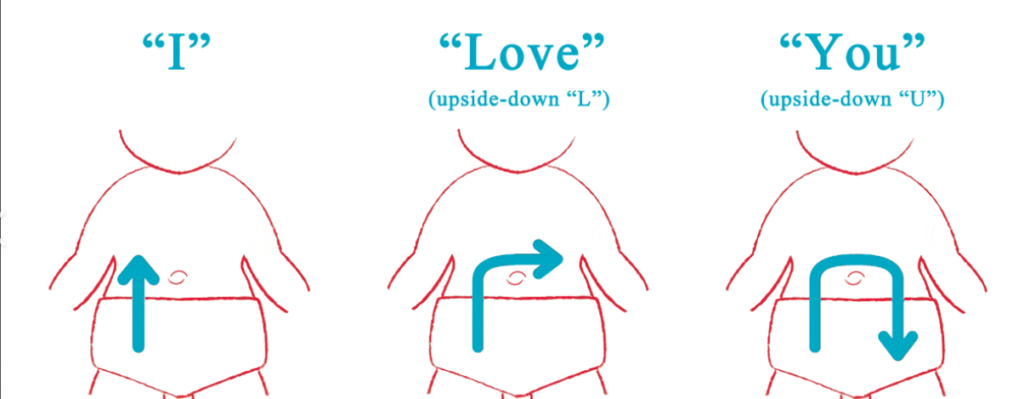
positions to help newborn poop
Looking for positions to help your newborn poop? Here are 5, but first let’s look at why they might be constipated in the first place so you dont have to come back to this blog post. There are several factors that can contribute to constipation in newborns. One common cause is formula feeding. Formula-fed babies may be more prone to constipation because formula can be harder to digest than breast milk. Additionally, if the formula is not mixed properly or if the baby is not getting enough fluids, it can lead to constipation.
Dehydration is another common cause of constipation in newborns. Babies need to stay hydrated to keep their stools soft and easy to pass. If a baby is not getting enough fluids, it can lead to hard stools and constipation.
Certain medications can also cause constipation in newborns. For example, some antibiotics can disrupt the balance of bacteria in the gut, leading to constipation. It’s important to talk to your pediatrician if your baby is on any medications and experiencing constipation.
How to Recognize Signs of Constipation in Your Baby

It’s important for parents to be able to recognize the signs of constipation in their baby so that they can take appropriate action. To relieve your anxiety, here are some common symptoms of constipation in infants include hard stools that are difficult to pass, straining or grunting during bowel movements, and discomfort or crying during bowel movements.
Monitoring your baby’s bowel movements is crucial in identifying constipation. Newborns typically have several bowel movements a day, and the consistency should be soft and easy to pass. If you notice a change in your baby’s bowel movements, such as fewer bowel movements or harder stools, it may be a sign of constipation.
If your baby is experiencing severe constipation or if the constipation persists for more than a few days, it’s important to seek medical attention. Your pediatrician can help determine the underlying cause of the constipation and provide guidance on how to relieve it.
Now on to the positions to help newborn poop
Now that we understand the common causes and signs of constipation in newborns, let’s explore some techniques that can help relieve constipation and promote healthy bowel movements.
The Classic Bicycle position for Infant Bowel Movements

The bicycle exercise is a classic technique that can help stimulate bowel movements in infants. To perform this exercise, lay your baby on their back and gently move their legs in a cycling motion, as if they were riding a bicycle. This movement can help to stimulate the muscles in the abdomen and promote bowel movements.
It’s important to perform this exercise gently and not force your baby’s legs into the cycling motion. Start with slow and gentle movements, and gradually increase the speed if your baby is comfortable. You can also try gently pushing your baby’s knees towards their chest while performing the bicycle motion to further stimulate bowel movements.
The Belly Massage Technique for Relieving Constipation

Massaging your baby’s belly can also help promote digestion and relieve constipation. To perform a belly massage, lay your baby on their back and gently rub their belly in a clockwise motion using your fingertips. This can help to stimulate the digestive system and promote bowel movements.
It’s important to perform the belly massage gently and not apply too much pressure. Start with light strokes and gradually increase the pressure if your baby is comfortable. You can also try using a warm towel or applying gentle heat to the belly before performing the massage to help relax the muscles and promote digestion.
The Knee-to-Chest Position for Encouraging Bowel Movements

The knee-to-chest position is another technique that can help relieve constipation in newborns. To position your baby in this pose, gently lift their legs and bring their knees towards their chest. Hold this position for a few seconds and then release. This movement can help to stimulate the muscles in the abdomen and promote bowel movements.
It’s important to perform this position gently and not force your baby’s legs into the knee-to-chest pose. Start with slow and gentle movements, and gradually increase the duration of the pose if your baby is comfortable. You can also try gently massaging your baby’s belly while they are in the knee-to-chest position to further stimulate bowel movements.
The Tummy Time Method for Promoting Digestion

Tummy time is a beneficial activity for babies that can also help promote digestion and bowel movements. Tummy time involves placing your baby on their stomach while they are awake and supervised. This position helps to strengthen the muscles in the neck, shoulders, and back, and can also improve digestion and bowel movements.
To incorporate tummy time into your baby’s routine, start with short periods of time, such as a few minutes, and gradually increase the duration as your baby becomes more comfortable. You can also try placing a rolled-up towel or blanket under your baby’s chest to provide additional support and make tummy time more comfortable.
When to Seek Medical Attention for Your Baby’s Constipation
While constipation is common in newborns, there are times when it may be a sign of a more serious issue. If your baby’s constipation persists for more than a few days, or if it is accompanied by other symptoms such as vomiting, fever, or blood in the stool, it’s important to seek medical attention.
Constipation can sometimes be a sign of an intestinal blockage or other underlying medical condition. Your pediatrician can help determine the cause of the constipation and provide appropriate treatment. They may recommend changes to your baby’s diet, prescribe medication, or perform further tests to identify any underlying issues.
positions to help newborn poop
Constipation can be a common issue among newborns, but there are positions to help newborn poop that can help relieve constipation and promote healthy bowel movements. The bicycle exercise, belly massage, knee-to-chest position, and tummy time are all positions to help newborn poop that can help stimulate the digestive system and promote bowel movements in infants. It’s important to monitor your baby’s bowel movements and seek medical attention if their constipation persists or is accompanied by other symptoms. By incorporating these positions to help newborn poop and seeking appropriate medical care when needed, you can help relieve your baby’s constipation and promote their overall health and well-being.
Not satisfied with our list? Check out this blog post on the same topic
5 Tried and Tested Positions to Help Your Newborn Poop
Rising Stars: 96 Unique Boy Names Starting with R
Savoring New Flavors: When Babies Begin Pureed Food Adventure!
Christmas Crafts for Toddlers
Christmas Crafts for Toddlers Christmas crafts for toddlers can make a magical time of year…
Creating the Perfect Sleeping Environment for Your Newborn in a Bassinet: How to Get Newborn to Sleep in Bassinet
How do you get your newborn to sleep in bassinet? The Importance of a Good…
The Truth About the 10 Month Sleep Regression: What to Expect
What is the 10 month sleep regression? The 10 month sleep regression is a period…




